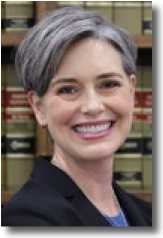A Practitioner’s Guide to Utah Rule of Evidence 404(b)
| Publication year | 2024 |
| Citation | Vol. 37 No. 1 Pg. 25 |
| Pages | 25 |
January 2024
Article
By Louisa M. A. Heiny & Marielle Forrest
Like most people, jurors are prone to making propensity inferences. When presented with evidence that a person has acted a particular way in the past, they might conclude that the person is more likely to have acted that way again. Utah Rule of Evidence 404(b), like its federal counterpart, anticipates this very human reaction and prohibits the admission of a "crime, wrong, or other act" when offered to "prove a person's character in order to show that on a particular occasion the person acted in conformity with the character." Despite Rule 404(b)'s protections against other acts evidence, such evidence is often admissible when proffered for a non-propensity purpose.
This article outlines evidence that triggers Rule 404(b), the three-part test used to determine the admissibility of evidence proffered under 404(b), the demise of the doctrine of chances as an ancillary route to admissibility of other acts evidence, mitigation strategies available when 404(b) evidence is admitted, and appellate challenges to the admission of 404(b) evidence.
TRIGGERING 404(b)
Although 404(b) evidence is often called "prior bad acts" evidence, that phrase is a misnomer. Rule 404(b) applies to a range of acts, whether prior or subsequent to the event at issue. However, its applicability may depend on who performed the conduct; when it occurred; whether the conduct constitutes a "crime, wrong, or other act"; and whether the conduct is sufficiently distinct from the crime charged.
"A Person's Character"
Under its plain language, Rule 404(b) restricts other acts evidence "to prove a person's character." See Utah R. Evid. 404(b). Although the rule does not define "person," the Utah Supreme Court has defined it to include "an 'accused,' a 'victim,' or a 'witness.'" State v. Vargas, 2001 UT 5, ¶ 31, 20 P.3d 271. Whether groups, entities, or corporations are considered a "person" under 404(b) is "an unsettled area of law." Carter v. State, 2019 UT 12, ¶ 162, 439 P.3d 61. But see Campbell v. State Farm Mut. Auto. Ins. Co., 2001 UT 89, ¶ 74, 65 P.3d 1134 (analyzing 404(b) evidence admitted against a corporation).
Prior and Future
Although evidence offered under Rule 404(b) is often referred to as prior bad act evidence, "the rule itself makes no reference to 'prior' acts." State v. Main, 2021 UT App 81, ¶ 18 n.7, 494 P.3d 1056. Accordingly, 404(b) evidence does not need to occur before the conduct at issue. State v. Von Niederhausern, 2018 UT App 149, ¶ 21 &n.6, 427 P.3d 1277.
Crimes, Wrongs, and Other Acts
Because Rule 404(b) applies not just to "crimes," but also to "wrongs" and "other acts," evidence of a defendant's charged conduct may trigger the rule even if the defendant was ultimately acquitted. See, e.g., State v. Hildreth, 2010 UT App 209, ¶ 44, 238 P.3d 444. Moreover, 404(b) evidence does not need to be criminal or even an act, State v. Hood, 2018 UT App 236, ¶¶ 25-28, 438 P.3d 54, and the rule is triggered by evidence of a person's character, "good or bad." State v. Richins, 2021 UT 50, ¶ 10 n.2, 496 P.3d 158, abrogated on other grounds by State v. Green, 2023 UT 10, 532 P.3d 930.
LOUISA M.A. HEINY is Associate Dean for Academic Affairs and a Professor (Lecturer) at the University of Utah SJ. Quinney College of Law.

MARIELLE FORREST is a graduate of the University of Utah SJ. Quinney College of Law and an attorney in Utah.

"Other" Acts and the Intrinsic Evidence Doctrine
By its plain language, Rule 404(b) applies only to other acts, that is, to "evidence that is extrinsic to the crime charged." State v. Lucero, 2014 UT 15, ¶ 14 n.7, 328 P.3d 841 (cleaned up), abrogated on other grounds by State v. Thornton, 2017 UT 9, 391 P.3d 1016. Evidence that is "part of a single criminal episode" or "inextricably intertwined" with the charged crime is considered evidence of this crime, or "intrinsic." Main, 2021 UT App 81, ¶ 18. Like all evidence, intrinsic evidence is subject to Rules 402 and 403, but sidesteps 404(b)'s non-propensity purpose requirement. Care should be taken to avoid interpreting the intrinsic evidence doctrine too broadly, as it could swallow Rule 404(b) and allow the admission of impermissible propensity evidence. See id. ¶ 23 n.9.
RULE 404(b)'S THREE-PART TEST
Other acts evidence is admissible only if it surmounts Rule 404(b)'s three-part test: the evidence must be offered for a non-propensity purpose, it must be relevant, and its risk of unfair prejudice must not substantially outweigh its probative value. As the court proceeds through this analysis, it is governed by the rule's plain language, with no presumption of admissibility or inadmissibility. State v. Lowther, 2017 UT 34, ¶ 30 n.40, 398 P.3d 1032.
A Non-Propensity Purpose
Assuming evidence is extrinsic and meets the other requirements to trigger 404(b), the proffering party must make a threshold showing: that there is "a plausible, avowed purpose" for the evidence beyond its propensity purpose. Thornton, 2017 UT 9, ¶ 58. Rule 404(b)(2) articulates nine non-propensity purposes, although that list "is not exhaustive." State v. S.H., 2002 UT 118, ¶ 28, 62 P.3d 444.
Motive
Utah case law is replete with motive arguments built atop 404(b) evidence. In proffering evidence of motive, the State asks the jury to infer why a defendant would be driven to carry out a crime, rather than merely asking the jury to infer that the defendant has a propensity for bad behavior. In this sense, motive evidence is not solely a propensity inference. The State frequently proffers 404(b) evidence to demonstrate a defendant's motive in cases of murder and sexual abuse. See, e.g., State v. Bisner, 2001 UT 99, ¶¶ 56-57, 37 P.3d 1073 (murder); State v. Burke, 2011 UT App 168, ¶¶ 30-32, 256 P.3d 1102 (sexual abuse).
Opportunity
Prior bad acts may speak to a defendant's opportunity to commit a crime when those acts demonstrate that the defendant had "the resources, the skill, the experience, the organization, or [the necessary] contacts" to commit the crime in question. Christopher B. Mueller &Laird C. Kirkpatrick, Federal Evidence § 4:32 (4th ed. 2021) (cleaned up). While opportunity is, in Utah, an infrequently proffered non-propensity purpose, there are some noteworthy cases. In State v. Jamison, the State invoked 404(b) evidence of the defendant robbing a change machine to show that he had the opportunity - the skill and experience - to do it again. 767 P.2d 134, 135-37 (Utah Ct. App. 1989), abrogated on other grounds by State v. Doporto, 935 P.2d 484 (Utah 1997). And, in Thornton, evidence that a defendant supplied a young victim's mother "with drugs and encouraged her involvement in prostitution" tended to demonstrate the defendant's "position of power or trust in the household" and, thus, the defendant's "opportunity" to sexually abuse the victim. 2017 UT 9, ¶¶ 16-17.
Intent
Bad act evidence may be used to establish a defendant's intent to commit a crime. Where a defendant has acted a particular way before, a jury may infer that the defendant intended for the particular result to come about on this...
To continue reading
Request your trial
